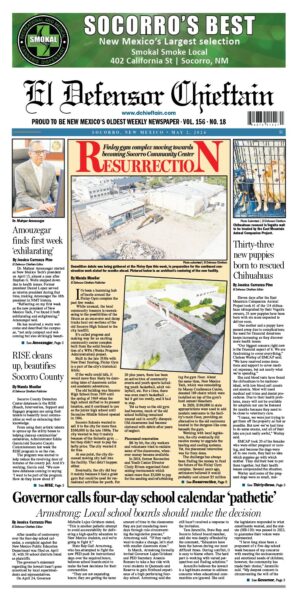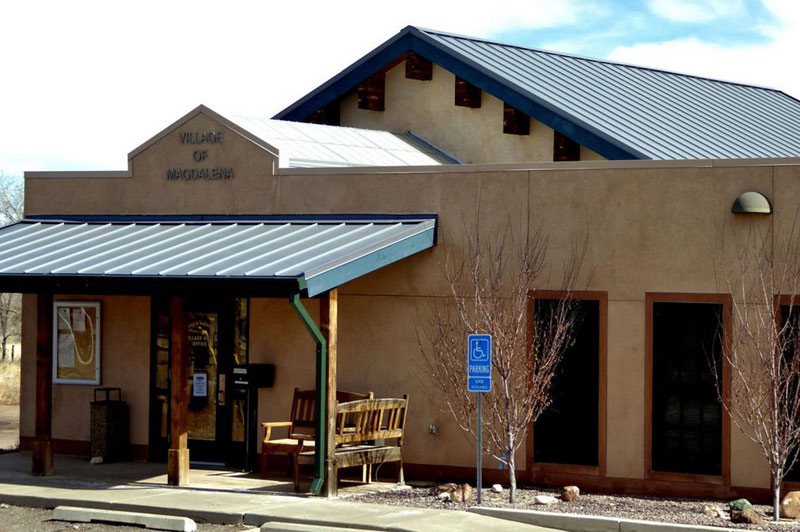Around the country, attendance issues stemming from the pandemic continue to plague schools. According to the New Mexico Public Education Department, across the USA, more than 8 million students are missing so many days of school that they are academically at risk.
The “million-dollar question” as it was described by Magdalena principal, Chris Backstrom, is the dilemma of how to get kids back in school.
The New Mexico Public Education Department’s Attendance for Success act requires school districts to report their attendance records to the state for data collection from which they create an annual report. They define chronic absenteeism as missing 10 percent or more of school days, including excused and unexcused absences.
According to PED’s annual state, district, school attendance report on their website, the statewide chronic absenteeism rate from 2022-2023 school year was 39.22 percent, more than double the rate of 17.97 percent in the pre-covid school year of 2018-2019.
Magdalena school district was close to average in the 2018-2019 school year with 17.8 percent and now sits at 49.37 percent, above the state average.
In 2018-19 school year Socorro district was below average at 13.73 percent and has risen to 53.29 percent in the 22-23 school year.
According to the PED’s website, the attendance for success model has a tiered system with procedures in place to address absenteeism.
Tier 1: Students who have missed less than 5 percent of classes for any reason.
Tier 2: Students who are missing 5 percent or more but less than 10 percent of classes or school days for any reason.
Tier 3: Students who are considered chronically absent and missing 10 percent or more but less than 20 percent of classes or school days for any reason.
Tier 4: Students who are considered excessively absent and missing 20% or more of classes or school days for any reason.
According to their data collection, in the 2022-2023 school year Socorro School district had 23 percent of students in Tier 4 and Magdalena had 16 percent of students in Tier 4.
Magdalena School District
At February’s school board meeting, Magdalena superintendent, Glenn Haven, said there is a push for restorative justice, a more humane and relationship focused approach to attendance. He said Magdalena is unique in that they have an equity council made up of students who advise and contribute their thoughts on different issues including attendance at the school in hopes that, “the young folks can teach us old folks.”
He believes that one part of the attendance problem in Magdalena can be attributed to the open enrollment between the Alamo and Magdalena schools and students going back and forth between them.
The lack of repercussions, accountability and support was brought up at the February meeting.
Keri James, federal state programs coordinator, said that once kids get to tier three and four, the school is supposed to refer students to outside agencies.
“We don’t get that kind of support that we used to get from outside agencies. There used to be some teeth when we could get CYFD involved and juvenile probation officers…. but none of that’s in place anymore; we can make those referrals, but nothing happens,” James said.
Backstrom asked that if the school isn’t getting help from the outside agencies like they need, “what can we do to make our policies stricter and hold them more accountable?”
Lynn Majors, school board president, brought up the example of Rio Rancho’s student support center which serves as a safe place for students who are having issues at home to get access to services, “I’m just wondering how we can help the kids help themselves, if the parents aren’t going to help?”
Board member, Kelby Stephens, said that they could blame the issue on a multitude of things, but he felt there were no excuses and that they need to work together and initiate a plan that they could continue to review and adjust as needed.
“We can’t beat around the bush with numbers. We have to ask what kids we failed and how can we change that? it’s a constant fight,” Stephens said.
The Magdalena school board committed to adding the attendance issue to their board retreat agenda and requested regular student success updates, including attendance, as often as possible from the administration.
Socorro School district
At Socorro’s school board meeting in February, attendance and behavior issues were brought up.
Christine Peguero’s(high school principal) report showed a downward trend of attendance in February and she told the board they are utilizing positive reinforcement with a raffle for big ticket items to reward students with good scores and attendance. Peguero said, later that week, some staff members would be attending a conference on attendance.
“The state recognizes that it’s a problem statewide,” said Peguero.
She said the PED is trying to use districts who are successful to help other schools and there is a lot of pressure on the schools right now, especially since the PED has pulled out parent accountability.
Julie Romero and Kim Sanchez, principals of Midway and San Antonio elementary respectively, created an attendance team with Casa de Luz, a family support agency in Socorro, and a juvenile probation officer of Project Aware, who are meeting monthly. They have joined a research project with the state to come up with solutions to help families.
“It’s been a great partnership we’ve been able to come together and put our heads together to be able to support families,” Romero said.
Tara Jaramillo, board member and state representative, said that the attendance team research project comes from CYFD funding and all schools in Socorro can participate. She said in the legislative session GRO money, formerly known as junior money, is using the evidence based three-year pilot program with communities.
“I chose Socorro so we could look at attendance,” Jaramillo said. “I believe that the biggest hindrance to our ability to educate and work with our children is the lack of communication between providers and knowing that all of us are state providers, but none of us use the same data base or communication base.”
As an example, Casa de Luz might have record that a child is experiencing homelessness, but school might not. She said the idea is to create a communication base and is an expansion of the crisis response team.
Jaramillo said that if, in three years, they can show that the GRO money works then the state will continue to fund it.
Board president David Hicks said it ties in with the argument against the PED’s push for five days; that attendance is more important than days.
“When you have great attendance, your scores are up, when your attendance is down there is just no way around it, your scores are down,” Hicks said.
Jaramillo said she thought behavior was a huge concern, especially at the middle school where superintendent Ron Hendrix has had to address the students five times this school year and felt that it was priority for the district.
“Some behaviors are getting out of hand… and kids are telling us that they can’t learn because of some of the things that are happening,” Hendrix said.
He said he has been addressing the students and giving them clear expectations along with sending letters home to parents about the behavior.
Board member, Sharon Sessions, suggested a guided townhall that included the larger community to identify priorities for the school district, “I don’t think that’s something that comes from the board, I think it comes from the community that elected us.”
It was decided to organize a town hall meeting to allow school employees, parents and community members to contribute to the discussion in a guided setting. The board agreed that before the town hall, the board will schedule a work session to discuss priorities and draft outcomes.






















